 Written by Henry Hoffman, MS, OTR/L
Written by Henry Hoffman, MS, OTR/L
Every 40 seconds, someone in the United States has a stroke. Numerous resulting impairments can occur ranging from speech issues to sensory loss to muscle weakness to gait abnormalities. Preserving function, quality of life, and independence become the primary goals of stroke recovery and rehabilitation. Thankfully, improvements in the medical management of stroke patients including numerous advancements in stroke recovery devices have made preserving patient independence more attainable than ever. Rated one of the top recovery devices by thousands of patients, the SaeboStep offers a low-profile yet highly effective foot drop brace that supports the foot and ankle during gait, reduces foot drop, and improves safety with walking and functional mobility.
A stroke, also known as a cerebrovascular accident, can occur anywhere within the blood vessels of the brain and results when a clot either obstructs a blood vessel (ischemic stroke) or a brain bleed results from a weakened vessel wall (hemorrhagic stroke). Depending on the location of the stroke within the brain, various signs and symptoms may present. In the case of foot drop, the most common location of involvement is the middle cerebral artery which supplies the part of the brain responsible for the motor function of the leg.
When we walk, the ankle must dorsiflex (or pull upwards) in order to sufficiently clear the foot during the swing phase of gait. Following a stroke, if weakness presents in the ankle dorsiflexor muscles, the lower leg isn’t able to produce ample muscle activation to clear the foot. As a result, the body will compensate with excessive hip or knee flexion, or circumduction leading to steppage gait and drop foot. Drop foot braces prevent this compensatory movement by supporting the foot and ankle in a dorsiflexion position. This helps the user clear the foot, reduce fall risk, and improve his or her walking form. Saebo brand, which specializes in stroke recovery medical devices, created the SaeboStep, a top-quality drop foot brace that comfortably and conveniently supports the lower leg and gets you moving.
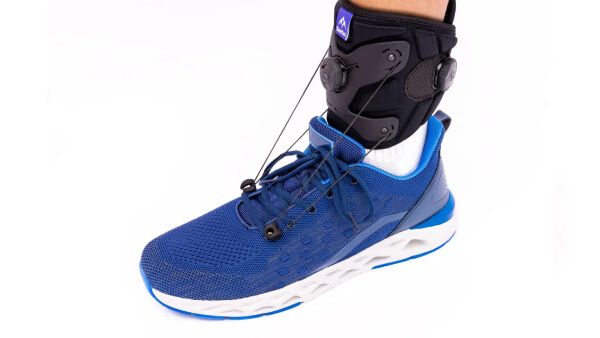
The SaeboStep is a lightweight yet durable foot drop brace offering equal parts convenience and comfort to keep you safe and secure during mobility. It was created to replace the bulky, stiff splints often prescribed for patients with foot drop following a stroke and to promote optimal foot clearance and improved gait mechanics. With a contoured fit and easy attachment to the eyelets of your shoe, the device can be comfortably worn with most men’s and women’s footwear.
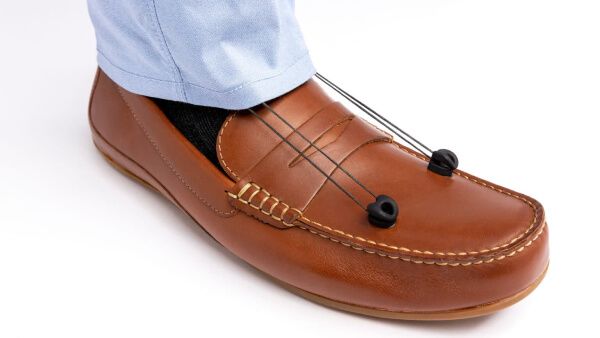
The SaeboStep was skillfully constructed to be fully adaptable with adjustable dials for a customized fit. The unique design can fit patients with ankle circumferences ranging from 6.5 inches to 11 inches with adjustments made by a simple turn of the dial. In contrast to bulky or custom AFO braces, the SaeboStep can be adjusted seamlessly from the comfort of your home making it easy to accommodate changing swelling levels or apparel needs.
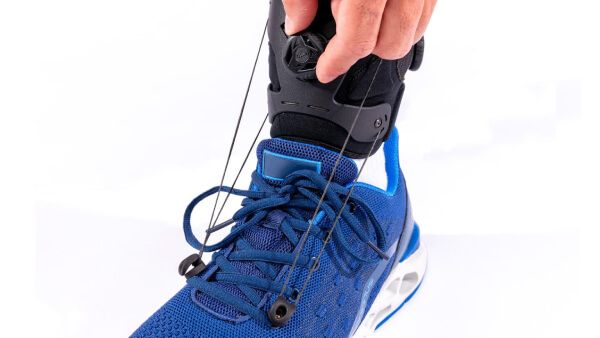
Following a stroke, it is typical to see unilateral or single-sided impairment in both the upper body and lower body making device management challenging. The SaeboStep was curated with you in mind and can be applied with just one hand- no caregiver assistance is required. With easy donning, easy release, and great usability, it’s a no-brainer why SaeboStep is rated the best foot drop brace for stroke patients.
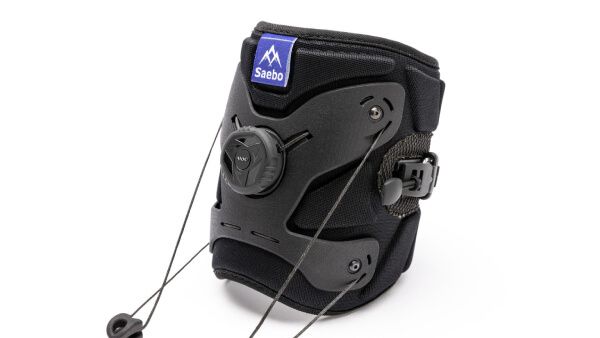
Low-profile and discrete, the SaeboStep excels at being inconspicuous and complimentary. Concealable under clothing, the device can help support the foot and ankle, improve your walking pattern, and reduce the risk of falling all while remaining out of sight.
Finally, rest assured the SaeboStep is both secure and stable with a cuff dial, semi-rigid brace plate, and magnetic fastener. Unlike the bulky uncomfortable shoe base found in many foot/ankle orthoses, the SaeboStep uses a dual fastener system with eyelet hooks to safely attach and secure the brace to the shoe and maintain support.
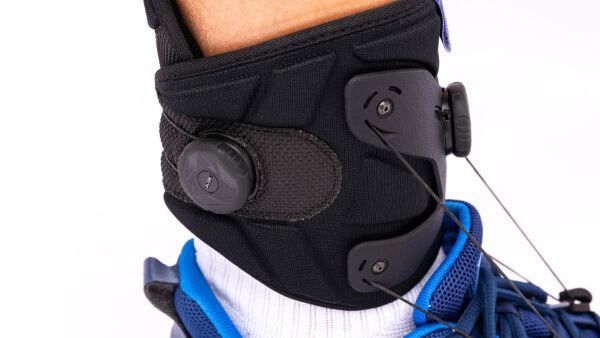
“I broke my right lower leg last October and had severe nerve damage. I used an AFO for months and found it extremely uncomfortable although my rehab staff insisted I wear it to walk safely with my drop foot. While surfing YouTube, I saw the SaeboStep and decided to give it a try. I’m so happy I did. I can now ride my bicycle and walk with improved safety and confidence. This brace has been a game-changer for me. I am so grateful for the SaeboStep and thrilled to be getting back to the things I loved to do pre-injury.”
-Bob R.
“I’ve been wearing a SaeboStep for 5 months after suffering a CVA last December. Both my neurologist and podiatrist were so impressed with the brace and one even commented that it was “the coolest ankle-foot brace he had ever seen”. I was previously custom-fitted for an AFO but greatly prefer the SaeboStep as it is a lightweight, low-profile, and extremely comfortable. I love this product!”
-David R.
“I suffered a stroke five years ago. I exhausted all of my physical therapy visits and plateaued with my balance and walking capabilities. I felt my life was literally upside down and then I found the SaeboStep. It was the light at the end of my tunnel and I’m so glad I found it. For the first time in the past five years, I have been able to walk short distances without a cane. SaeboStep has given me the confidence and security to clear my foot and keep me safe during ambulation. I cannot say enough good things.”
-Rebecca D.
Drop foot braces, along with physical therapy, can be extremely effective in improving gait patterns, reducing fall risk, and supporting the foot as the lower leg fatigues. They are not appropriate for individuals with complete lower limb flaccidity, open wounds on the lower leg, or severe lower extremity spasticity.
Besides a drop foot brace, incorporating functional electrical stimulation can be helpful to activate and retrain the muscles of the leg which dorsiflex the ankle and prevent the slapping motion of foot drop. It is a great adjunct to a drop foot brace and can promote muscle activation, improve sensation, and reduce pain. Our favorite device is the SaeboStim One Wireless EMS Unit.
Yes, foot drop is commonly seen following a stroke. It is caused by an interruption to the normal nerve communication in the lower leg. You are not alone; bracing, rehabilitation, and time all can help.
A drop foot brace is a lower profile option compared to an AFO. Whereas an AFO goes under the foot and attaches high up at the calf, a drop foot brace typically wraps from the ankle directly to the foot. AFOs tend to be more rigid compared to the semi-rigid alternative drop foot brace. Both maintain dorsiflexion and prevent plantarflexion and inversion of the foot during ambulation.
Stroke recovery can be challenging but improving foot recovery following a stroke is only one step away. If you or your loved one is looking to reduce foot drop and improve safety and efficiency with walking, it’s time to get moving and get your SaeboStep foot drop brace today.
For more information on similar products and recovery information, check out all available stroke recovery products and browse through our stroke recovery articles.
Finally, check out our blog, Caregiver University for more articles, information, and helpful buying guides to support you in making the most informed medical device purchases.
Thanks for reading!

Henry is known as a purveyor of neuroplasticity-based treatment and co-founder of Saebo, a leading provider of novel and evidence-based stroke recovery solutions. For over 20 years, he has provided hundreds of national and international brain injury/stroke courses certifying thousands of occupational and physical therapists worldwide.
Henry’s first stroke product, the SaeboFlex, was placed on permanent public display at the Wellcome Medicine Galleries exhibit at the Science Museum in London. The SaeboFlex was alongside other medical breakthrough technologies spanning the last 500 years, including the first MRI machine and the penicillin mold.
Saebo’s tagline is “No Plateau in Sight” with the understanding that there is no expiration date on neuroplasticity. Henry believes that patients can continue to make gains many years post-stroke and live a happy, healthy, and more independent life.